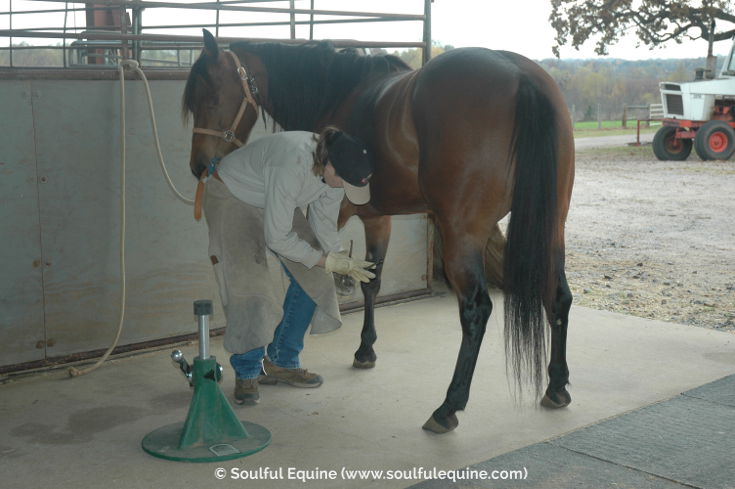
Stephanie Trimming a Client’s Horse in 2006
This is the first article in a series on getting started with natural hoof care. I’m going to start with this as an introduction. Then the “getting started” articles below follow:
- Natural hoof care for the traditional farrier
- Natural hoof care for the horse owner
- Natural hoof care for the horse owner who has a laminitic or foundered horse
Each article will be related but will focus on those specific topics.
For over nine years, I’ve been watching an incredible movement evolve in the horse industry. The movement I’m referring to is the natural hoof care movement. What’s very interesting, is that most people, like myself, started down the road to natural hoof care because of a particular situation where they were unable to make progress using traditional approaches.
In my case, at the time, it was my 14 year old quarter horse gelding, Dillon. He had been in shoes all his life and over time became lame even when shod. During that time, I decided to dig for information. I was not going to accept that my horse was lame and that was the end of it! I then came across Jaime Jackson’s book on natural hoof care. After extensive research I made the decision to pull Dillon’s shoes for good and never look back.
When I made that decision, my farrier at the time decided to just not show up anymore. On his part, the situation was handled in a very unprofessional manner, and it was clear to me that he did not have my horse’s best interest in mind. It was not about health and healing but about money and time.
I then arranged for another farrier to come pull the shoes on both my horses and do a flat pasture trim. My plan was to have him pull the shoes and then I would take over from there. That farrier commented on how “flat footed” Dillon was… he said to me “once a flat footed horse, always a flat footed horse” but I knew differently.
If only he could see Dillon today… he wouldn’t believe it was the same horse. He was the last traditional farrier to ever lay a hand on my horses. (Something I would like to note is that this is not an unusual achievement when natural hoof care principles are applied.)
Dillon was in pretty bad shape when we first started out, but through my passion for learning, and because I really love that horse, he is now sound and still rideable at 21. He even keeps my 3 year old in line and gives him a run for his money.
I’m not going to say it was an easy road, because it wasn’t. There was a lot of learning involved but lucky for both of us it was one of the best decisions I ever made.
My statements above are not to insinuate that all traditional farriers are bad… that’s not true. I think in general, they’re just trying to make a living and they’re doing what they where taught.
On the other hand, natural hoof care is a different ball game. I’ve been applying the principles for almost seven years now and it just keeps getting better the more the natural hoof care industry learns and evolves.
Soulful Equine’s mission is to “Help Your Horse THRIVE In Domestication“. Horses are unable to THRIVE using only traditional approaches to horse care.
It’s just a fact.
Most people’s horses survive, but will they actually have longevity and quality of life? This is what I believe it’s all about, however, in a world of “disposable” horses it can be a tough sale.
If you’re a traditional farrier and you’ve read this far, you’re probably ready for the rest of the information I plan to provide in my next article. The introduction was intended to weed out those who are probably not yet ready.
My next article will be on “Getting Started With Natural Hoof Care For The Traditional Farrier“. I will provide a list of what to consider if you’re coming from a traditional background, a list of principles for natural hoof care and quality resources to get you started on your journey… and that’s exactly what it is… a journey.
Keep it soulful,
Stephanie Krahl
